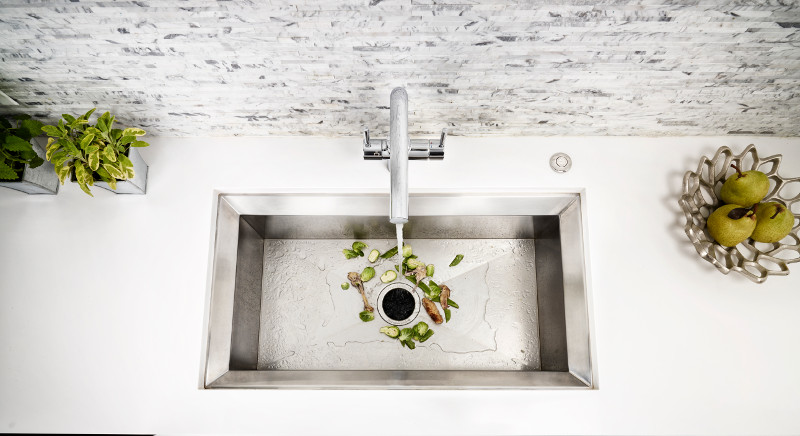When it comes to doing your bit for the environment at the end of an unfinished meal, the answer could be right in front of you – in your kitchen sink. With the help of InSinkErator, we grind down a few myths about this surprisingly eco-friendly system for dealing with unwanted food scraps.
Why this solution is an eco-friendly way to dispose of your food waste
In an ideal world, we would eat only what we needed and not be left with unwanted food scraps pushed to the side of plates. However, as we all know, life often gets in the way. Whether you end up over-catering for a dinner party, unable to convince the youngest family members to finish their meal or forget those leftovers pushed to the back of the fridge, it helps to know there is a tidy and environmentally friendly way to rid ourselves of consumption guilt.
According to the New Zealand Ministry for the Environment, 700,000 tonnes of organic waste is trucked to landfills every year in New Zealand. Once there, it quickly decomposes and produces methane, an environmentally harmful greenhouse gas at least 21 times more potent than carbon dioxide. In fact, landfills are considered the third largest sources of methane.

“Considering food waste makes up as much as 40 per cent of the solid waste stream in New Zealand, consumer and government officials should look at multiple options for managing food waste,” says Michael Keleman, manager of environmental engineering for InSinkErator. “Given so much focus on better managing food waste, stakeholders should take a closer look in their own homes – the answer might be right in their kitchen sink.”
While no one system is a silver bullet to keeping organics out of environmentally damaging landfills, one device, common in many New Zealand homes, is left out of the conversation – the food waste disposer. Used mainly for convenience by homeowners, disposers such as InSinkErators, are now present in nearly 40 per cent of all New Zealand homes.
We dispel eight myths surrounding these smart waste disposers.
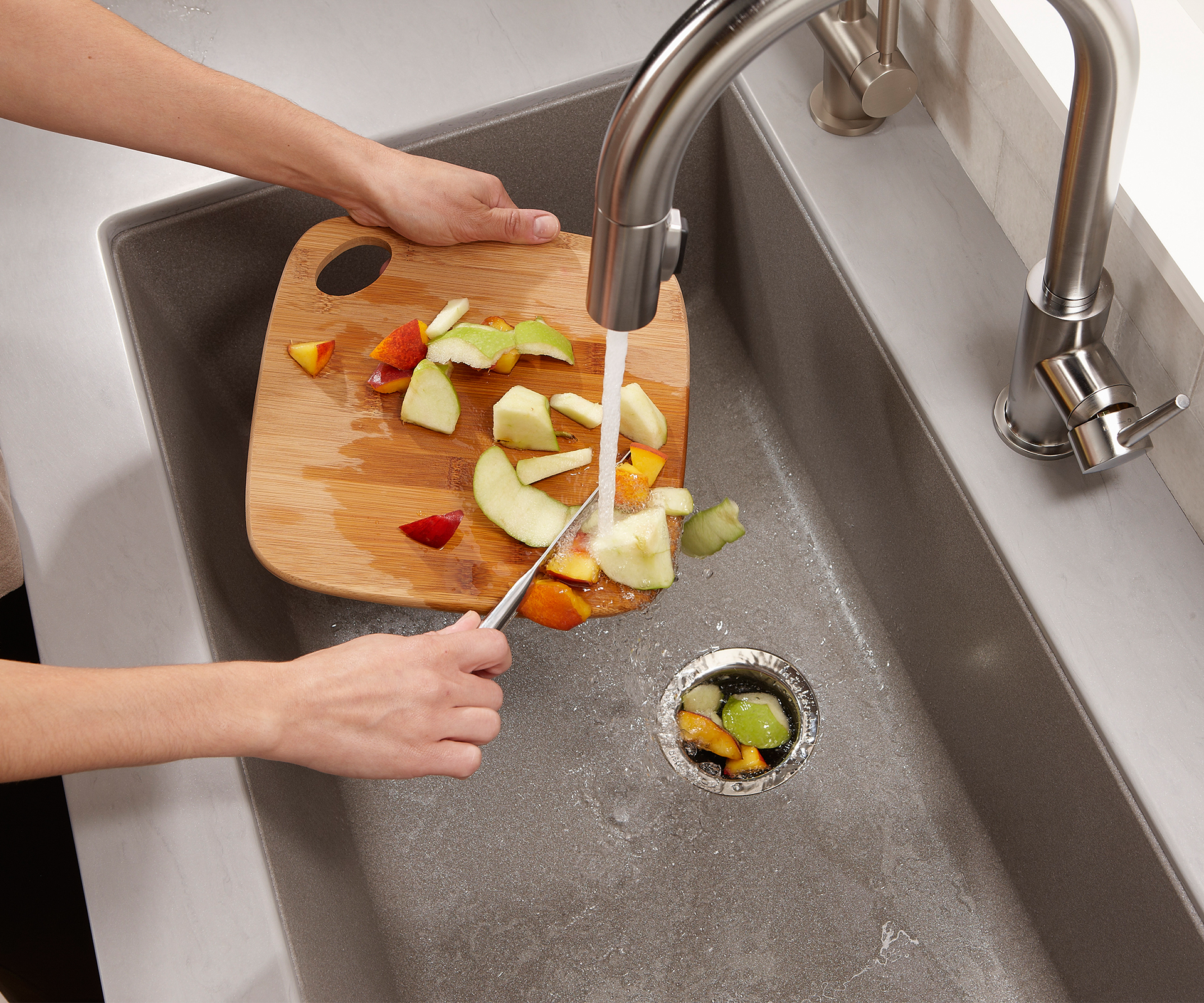
1. Myth: Food waste disposers use a lot of water and electricity
Fact: Disposers use around one percent or less of a household’s total water consumption – about as much water per day as one flush of a toilet. The electricity used to operate a disposer is minimal – on average, less than 50 cents a year – and can in fact create new energy when processed by modern wastewater treatment plants.
After grinding down unwanted or spoiled food, the mostly liquid waste is transported in the sewer to water resource recovery facilities. There the waste is converted into clean water and fertilizer.
On top of this, a number of facilities throughout New Zealand are able to capture the methane gas generated during processing waste products and convert it to renewable energy in the form of heat and electricity. This process is called anaerobic digestion, and it emits lower greenhouse gas emissions than composting. The Mangere Wastewater Treatment Plant in Auckland and Totara Road Wastewater Treatment Plant in Palmerston North both utilise anaerobic digestion, while Watercare, the wastewater authority in Auckland, has established a goal to become energy self-sufficient at two of its plants by 2025.
The water content of food – on average 70-80 per cent – is also recaptured and processed at the waste water treatment plant.
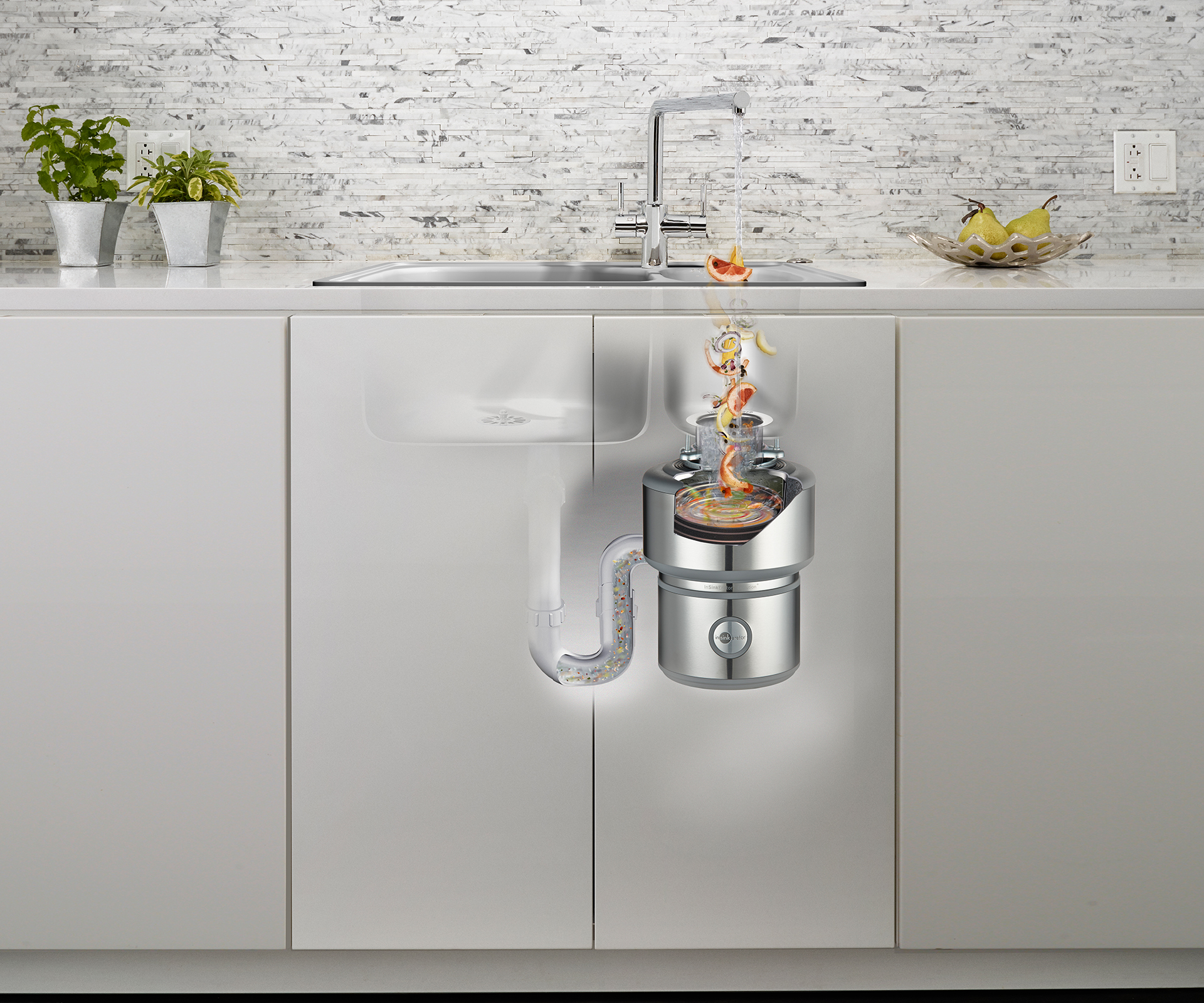
2. Myth: Certain food waste items can’t go down a disposer
Fact: The truth is that most food can go down a disposer. High performance models can handle virtually any waste, including bones and fibrous materials like celery.
“Modern waste disposers are capable of grinding nearly all types of food waste, but proper use is the key to reducing the risk of clogs,” says general manager of InSinkErator New Zealand, Barnaby Thompson. “First turn on a moderate stream of water before turning on the disposer, then add food scraps gradually and grind to completion before letting the water run a few extra seconds.”
Homeowners should never pour fats, oils and greases down their disposer as it causes issues in both plumbing and sewers – this is the case for any sink, with or without an InSinkErator.
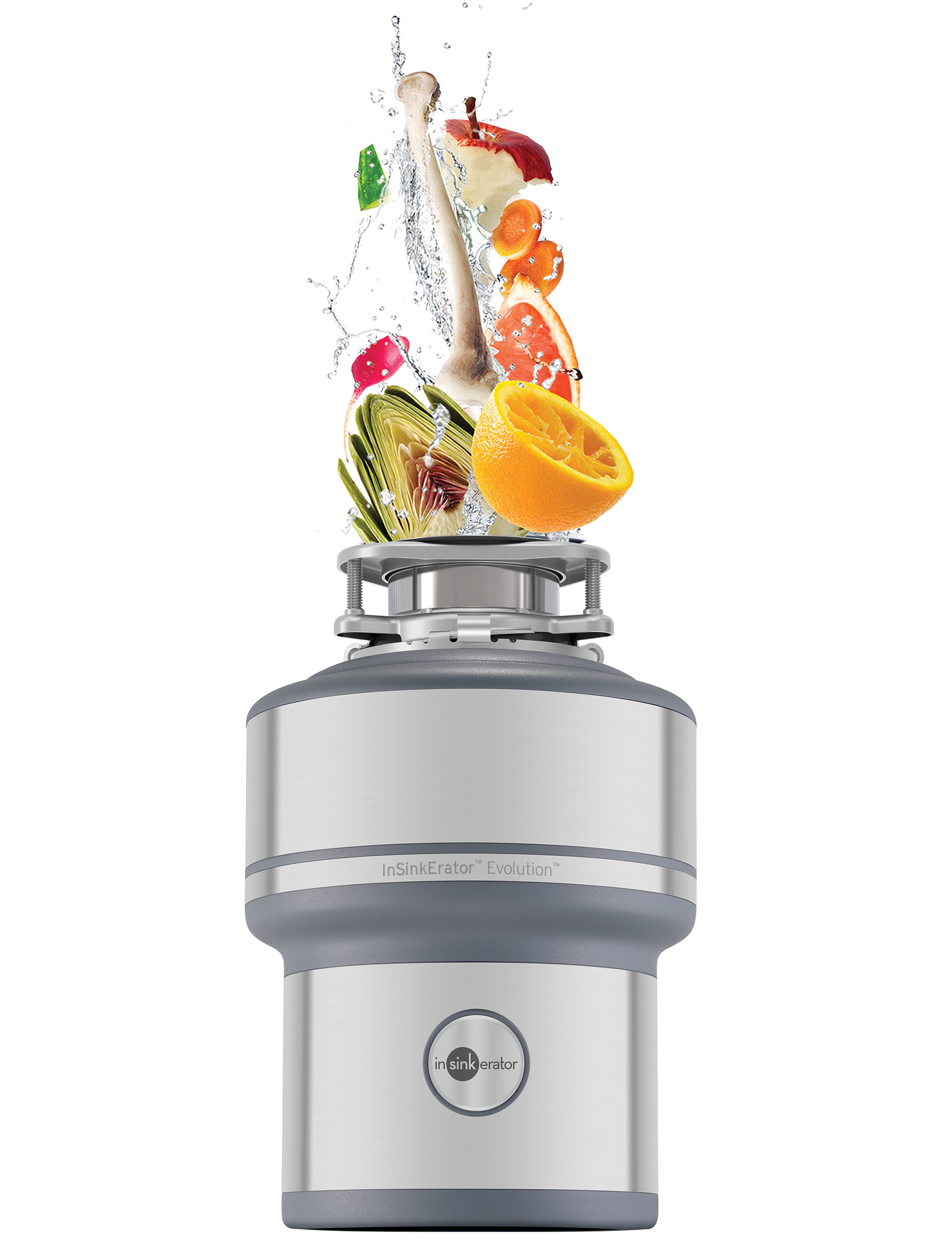
3. Myth: Food waste disposers will clog sewerage pipes
Fact: Ground up food waste is essentially the same density as water. So when used properly, disposers allow plumbing to efficiently transport particles to the wastewater treatment plant. While you may imagine blades whipping around and InSinkErator, surprisingly, there are small lugs instead. These act like hammers breaking down the food whilst spinning 360 degrees. Once small enough, food waste passes through small holes in a stationary grind ring and leaves the disposer as very fine particles in the sewerage system.
InSinkErator’s top of the range Evolution models (100 and 200) can grind 99 per cent of food types.
4. Myth: Food waste disposers overload the sewerage system
Fact: Modern design standards account for a modest increase in loading. The amount of additional loading to wastewater infrastructure is now well studied and understood so even in places where there is a very high penetration of disposers, the impacts are negligible.
5. Myth: Using a food waste disposers means you can’t compost food
Fact: InSinkErator disposers can be used as a complement to home composting systems. Composting food waste is a great option for homeowners who are willing and able to do so, especially for those in more rural areas, or those not connected to centralized sewage treatment infrastructure. However, composting meats and dairy products can be problematic, creating odours and attracting vermin and unwanted bugs such as silverfish, which is where the InSinkErator can step in.
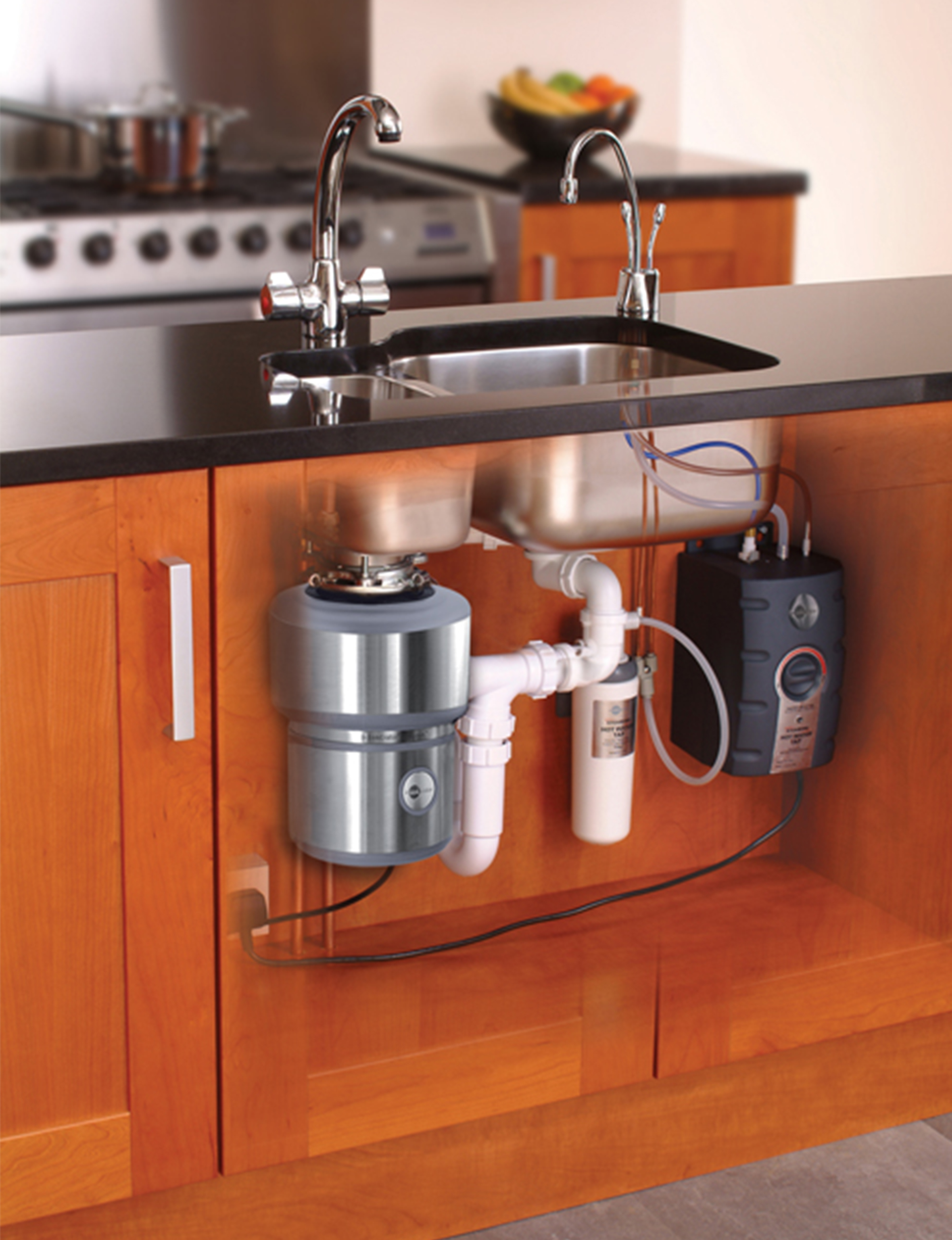
6. Myth: Food waste disposers are noisy
Fact: InSinkErator Sound Limiter insulation and Anti-vibration Mount technology enable the brand’s Evolution disposer models to operate with very little noise. Gone are the days of hearing that a load gurgling noise that gives ‘gurglers’ their nickname – modern disposers never interrupt a conversation. A good quality sink can also help eliminate the racket of vibrations.
7. Myth: You need a double sink bowl to have a food waste disposer installed
Fact: A food waste disposer can be installed with a single bowl sink or a double bowl sink, this is just a personal preference. InSinkErator do recommend installing a good quality sink with your food waste disposer to eliminate vibration and noise.
8. Myth: Food waste disposers can’t be used on a septic tank
Fact: InSinkErator food waste disposers are compatible with properly sized and maintained septic systems. If your system is sized for a dishwasher or clothes washer, it can handle a disposer. After all, a disposer uses only about as much water per day as one flush of a toilet.
EXPERT PROJECTS

Create the home of your dreams with Shop Your Home and Garden
SHOP NOW


